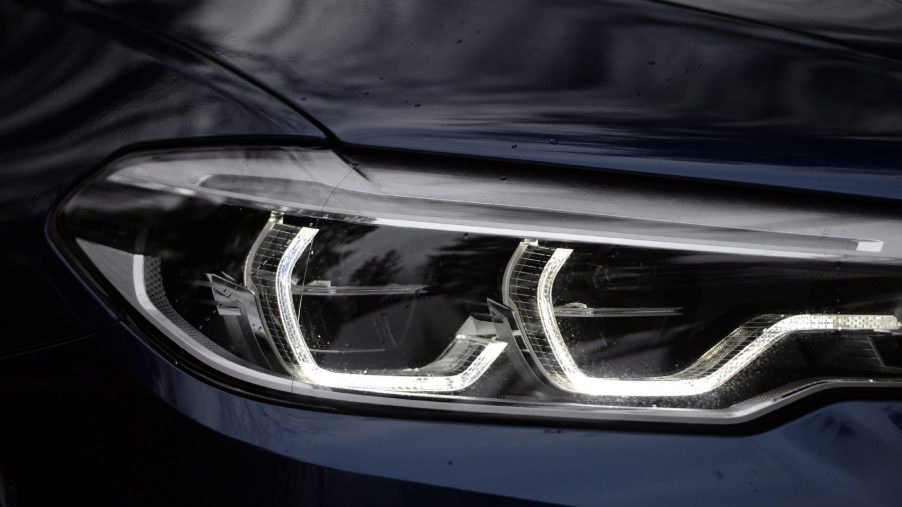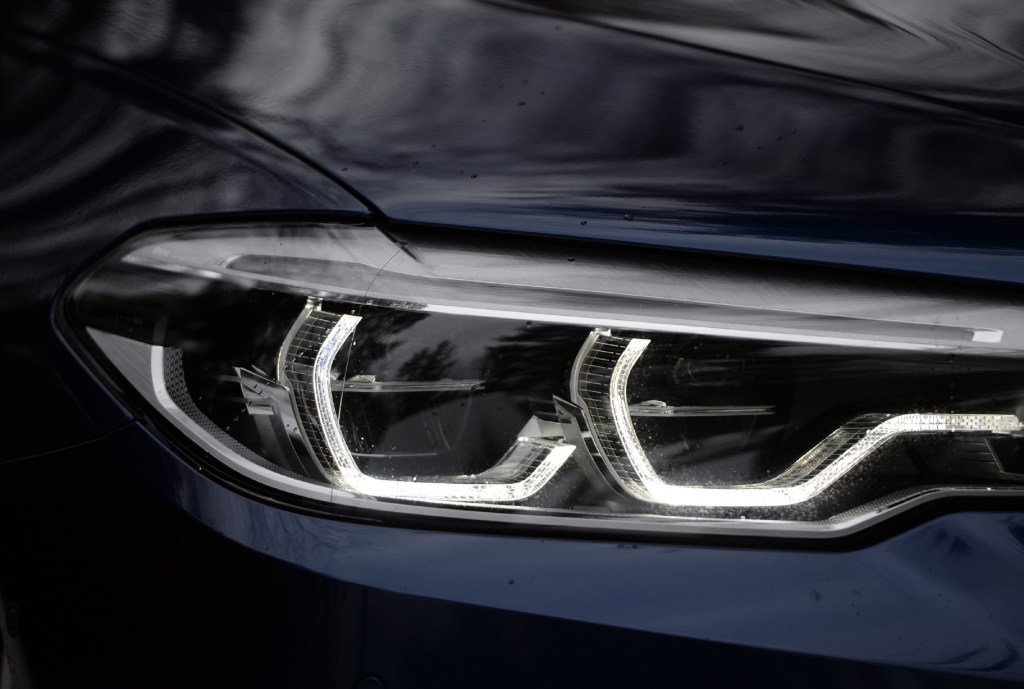
Are Adaptive Headlights the Same as Automatic High Beams?
Compared to airbags and ABS, headlights might not seem like important car safety components to some. At least, not until they’re blinded by an oncoming car’s high beams and find they can’t see the road properly. Hence why most carmakers’ advanced driver-assistance safety (ADAS) system suites include adaptive headlights. However, as with other ADAS features, many drivers don’t understand what these headlights can and can’t do. And that includes their distinction from automatic high beams.
Adaptive headlights have additional functions besides automatic high beams

As their name suggests, adaptive headlights adapt to changing road conditions to provide adequate lighting. However, although they often include automatic high-beam functionality, they’re not identical features. And just because your car has one of these headlight features doesn’t necessarily mean it also has the other.
Automatic high beams are pretty straightforward. Cars with this feature use sensors and/or cameras to detect oncoming taillights and headlights. If they detect one or the other, they automatically dim or switch off their high beams. Theoretically, this prevents you from dazzling other drivers on the road.
As noted earlier, adaptive headlights can have this high beam dimming feature. However, they’re also usually corner-adaptive headlights. When you turn the steering wheel, or when onboard sensors detect cornering forces, the headlights pivot to follow the road’s curve. Some can also pivot up and down based on elevation changes. And a few sophisticated systems even adjust bulb angles based on your speed to throw light further or closer, MotorTrend says.
Basically, although adaptive headlights often have automatic high beams, they often have additional capabilities. And while you can technically call automatic high beams ‘adaptive,’ they can only adapt in one way.
However, this all assumes we’re talking just about American headlights. Overseas, this terminology has an additional wrinkle.
Outside the U.S., adaptive headlights are also adaptive driving beam headlights
For years, U.S. headlight regulations lagged European ones to the detriment of drivers and pedestrians. And that meant we couldn’t enjoy the benefits of adaptive driving beam (ADB) headlights.
Also called ‘smart headlights,’ these are technically adaptive headlights, too, MT reports. Only instead of individual low- and high-beam bulbs, ADBs use multiple individually-controlled LEDs to light the road. When onboard sensors detect that an LED is shining on a car, it dims or turns that LED off. So, you can still see the road, but you’re not ruining someone else’s night vision.
Now, that might sound a lot like automatic high beams. And in a way, that’s kind of what ADBs are. However, they’re considerably more sophisticated. Also, their functionality is only achievable because of LED technology. You couldn’t run ADBs in an HID-equipped car, for example, because those bulbs aren’t as controllable.
Yet, as with automatic high beams, ADBs don’t necessarily have corner-adaptive functionality. But they’re still part of the adaptive headlights family.
ADBs are finally legal in the U.S., so mind your terminology
In short, the term ‘adaptive headlights’ really includes a broad spectrum (pun not intended) of headlight technology. Hence why it’s important for consumers to pay close attention to what kind of headlights their car has. For instance, Ford’s Co-Pilot 360 ADAS suite includes Automatic High-Beam Headlamps, but they lack corner-adapting functionality.
And these distinctions are only going to get more vital because, after a literal decade, the NHTSA is finally letting ADBs in. Admittedly, a 1970s safety standard still limits their total output and automakers will still need to test fully-installed systems, the New York Times notes. Nevertheless, it means adaptive headlights in the U.S. are about to become even more advanced and adaptive.
Hopefully, this article will help you stay ahead of the lit-up curve.
Follow more updates from MotorBiscuit on our Facebook page.


